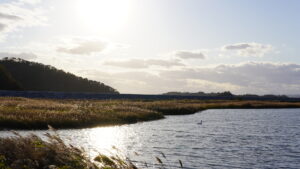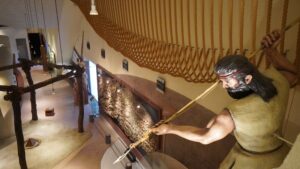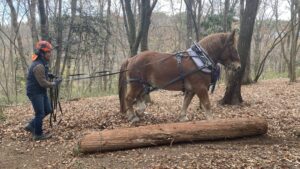OKU-MATSUSHIMA
JAPAN
2023
Contact
In the embrace of Matsushima Bay, where time stands still, lies Oku-Matsushima Village—a place where the echoes of a 7,000-year-old human journey resonate with the rhythms of modern sustainability. Located within this idyllic coastal haven, Oku-Matsushima beckons travelers to embark on a voyage that transcends time, unveiling a tale that celebrates the delicate harmony between cultural heritage, nature, and contemporary endeavors.
The story of Oku-Matsushima Village is one that gracefully unfolds through its profound connection to the past. The village bears witness to the human narrative etched into the landscape, epitomized by the monumental Satohama Shell Mounds—one of eastern Japan’s largest and most evocative remnants of human activity. These mounds are living archives of the Jomon to Yayoi periods, housing the remnants of a rich diet, from Jomon human bones to shells of oysters and scallops, attesting to a lifestyle in harmony with nature.
Matsushima Bay itself is designated as a “nationally significant scenic place offering exceptional views,” safeguarding its beauty under the Law for the Protection of Cultural Properties. Oku-Matsushima Village, a part of this revered landscape, nurtures the Satohama Jomon no Sato Historical Park—a haven of untouched historical significance. This park, where sea and forest whisper ancient tales, becomes an outdoor museum, inviting visitors to step into the past and forge connections with the cultural heritage of the village.
HIGHLIGHTS
-

Empowering women
Oku-Matsushima Village stands as a beacon of progress through its ‘Nadeshiko Kaisei Juku’ initiative. This framework fosters women’s empowerment and entrepreneurship within local industries, including tourism. Aligned with the ‘Higashimatsushima City Basic Plan for Gender Equality,’ this endeavor encourages women to participate in entrepreneurship seminars, resulting in several women founders emerging as entrepreneurs. Their involvement in local markets and trial shops has breathed new life into these spaces, further solidifying the rising participation of women in local industries.
-

Crafting the Nobiru Baum
Agricultural production corporation Agriead Naruse exemplifies resilience through the diversification of agriculture. Despite facing severe damage from the 2011 Great East Japan Earthquake and Tsunami, Agriead Naruse did not waver. Within a month after the disaster, they resumed the decontamination of their salt-affected rice fields and vegetable gardens. In a remarkable display of determination, they successfully produced mineral-rich, first-class rice within a year—a symbol of hope for regional socio-economic recovery.
Complementing their efforts, Agriead Naruse established NOBICO, an agricultural processing facility. Here, they craft ‘Nobiru Baum,’ a Baumkuchen cake made from homegrown rice flour and wheat flour. This delightful creation has garnered immense popularity, becoming a beloved local souvenir and a testament to the village’s enduring spirit.
-

Oku-Matsushima Olle Trail
Oku-Matsushima Village has unveiled a trailblazing initiative—the ‘Oku-Matsushima Olle Trail.’ Launched in 2018, this trail emerged as a response to a significant decline in tourist numbers following the Great East Japan Earthquake. ‘Olle,’ derived from the Korean Jeju Island dialect, translates to ‘the alleys that lead home from the main road.’ This hiking course is a symbol of international friendship, connecting Oku-Matsushima to sister trails in Jeju (Korea), Kyushu (Japan), and Mongolia.
Distinguished by its environmentally friendly approach, the Olle Trail invites visitors to engage with the natural environment through their five senses. Along the way, they traverse residential alleys, immersing themselves in stories of recovery and renewal following the disaster and tsunami. With approximately 30,000 visitors having explored this unique trail as of April 2023, it stands as a testament to Oku-Matsushima’s commitment to sustainable and immersive tourism experiences.

